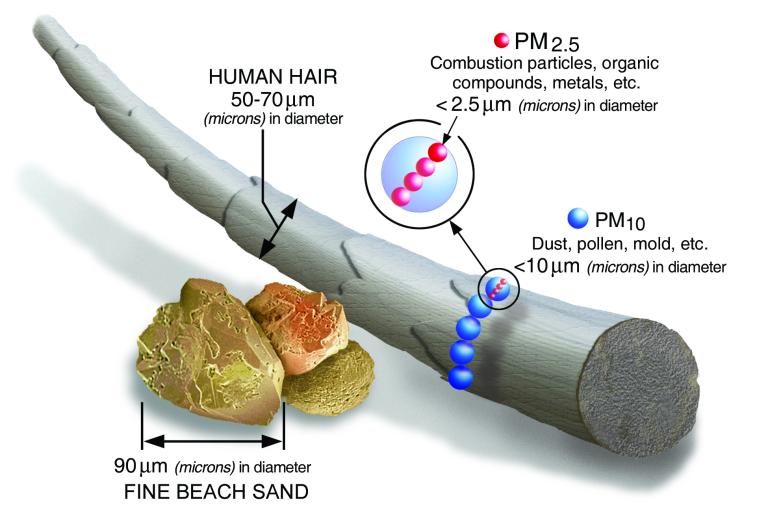Why Trees Matter for Clean Air
Air quality is a topic that often brings to mind industrial emissions and vehicle exhaust. However, there's another side to the story that doesn't get as much attention—trees. Far from just being pleasant to wander among, trees play a critical role in improving the air we breathe. They absorb pollutants and release oxygen, making them an essential part of any strategy to improve air quality. In this article, we'll take a closer look at how trees contribute to cleaner air, the science behind air pollution, and what steps are being taken in Oxfordshire to leverage this natural asset.
What is Air Pollution? Understanding the Invisible Threat
Air pollution is the presence of harmful substances in the air, coming from sources like vehicles, industrial facilities, power plants, and even wood-burning stoves. It's a health concern that can lead to issues ranging from minor irritations to severe conditions like heart disease and respiratory infections. In 2021, air pollution in Oxfordshire was linked to an estimated 320 early deaths. While often invisible, its impact is real and varies by region due to local pollution sources and weather.
What is Particulate Matter? The Tiny Culprits
Particulate matter (PM) consists of tiny particles of organic chemicals, acids, metals, and dust, emitted from fossil-fuel-burning vehicles and factories, as well as construction sites. PM10 particles are less than 10 micrometers in diameter, while PM2.5 particles are less than 2.5 micrometers. For context, a single strand of human hair is about 70 micrometers wide.
Why are these particles a problem? Their small size allows them to easily enter the respiratory system, posing risks like asthma, COPD, lung disease, and even cardiovascular issues. PM2.5 particles are particularly worrisome because they can penetrate deep into the lungs and even enter the bloodstream.

Image courtesy of the US Environmental Protection Agency
Nature's Air Filters: How Trees Can Help.
Trees are remarkably effective at improving air quality, and they do so in a couple of ways. First, their leaves act as filters, capturing PM10 particles on their surface. These larger particles often originate from construction sites, road dust, and other mechanical processes.
Second, trees are especially good at absorbing smaller PM2.5 particles, which are more harmful and can penetrate deep into our lungs. These particles are usually emitted from vehicles and industrial processes. Trees absorb these through tiny pores in their leaves called stomata, effectively removing them from the air.
The benefits of trees are not just limited to particulate matter. They also absorb other pollutants like nitrogen dioxide and sulphur dioxide, making them a comprehensive solution for cleaner air.
The species of tree and where it is planted will determine how influential that tree is in providing air quality benefits.
What Are We Doing in Oxfordshire?
In Oxfordshire, woodlands cover around 7% of the county, and currently remove just over 135 tonnes of particulate matter each year, which equates to nearly £290 million of health gain over the next 100 years. These numbers are not just impressive; they're a testament to the role trees play in public health.
With funding we’ve received from government, we aim to plant the equivalent of 40 hectares of woodland. Once fully established, these new trees could remove an additional 280kg/year of PM2.5 from the air once fully established. That's nearly £1.5 million worth of health gain each year. 1
What Can I Do? Your role in a cleaner Oxfordshire
You don't have to be a policy-maker or a scientist to make a difference in air quality. Here are some ways you can contribute:
- Visit Our Air Quality Website: Head over to www.oxonair.uk to get real-time updates on air quality in Oxfordshire. The site also offers resources and tips on how to reduce your own air pollution footprint.
- Become a Tree Guardian: Trees need up to 40 years to fulfil their capacity for improving air quality – so trees don’t just need to be planted, they need care too. Find out how you can help nurture young trees and become a Tree Guardian. Every tree counts when it comes to improving air quality.
- Identify Areas for Planting: Know of a public space that could benefit from more trees? Join or form a community group to consider potential planting projects. For more information, and then get support, expertise and tools from the Tree Service - check out Start a Community Tree or Woodland Project.
- Plant a tree: If you have a suitable space to plant and care for a tree - do it! It'll be great for you, you home and our planet. Find our tips here - Plant a tree
References
-
Calculations are based on the Pollutant removal by vegetation calculator by UK Centre for Ecology & Hydrology (UKCEH) and Economics for the Environment Consultancy (EFTEC).
Does this work?
A: Probably Not